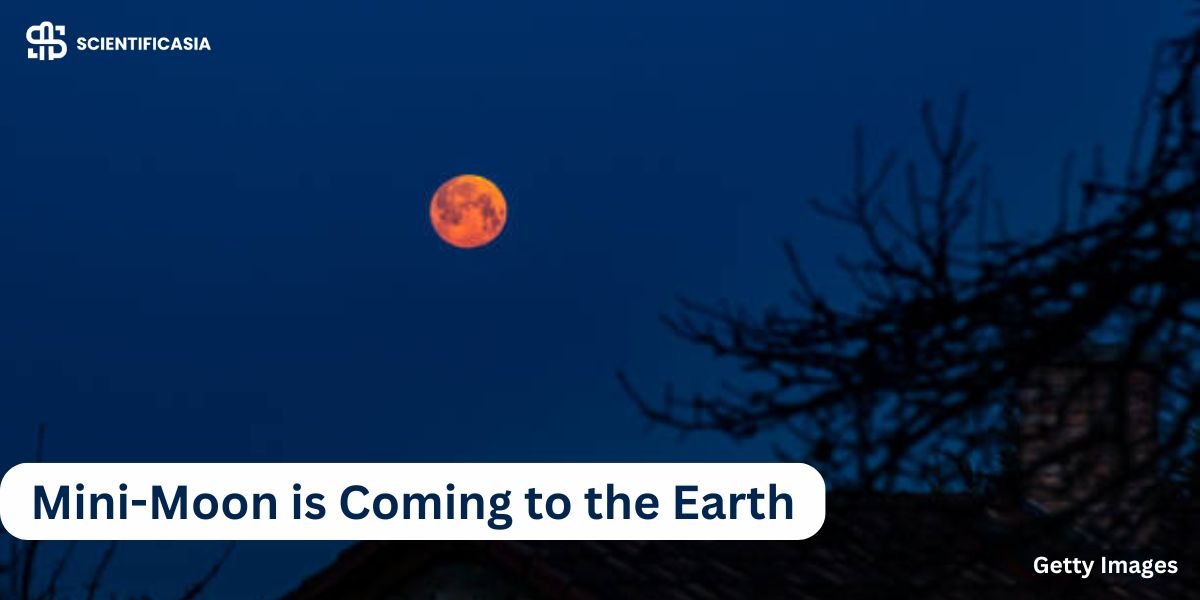Scientific Asia: It’s just a little person, and not even the most ardent mini-moon believers can agree that it is.
When asteroids get closer to Earth, they usually accomplish one of two things: they miss most of the time. Occasionally, they strike, leaving behind a horrifying fresh wound in the crust of our globe or a brilliant streak in the sky. On rare occasions, however, an asteroid is drawn into Earth’s orbit by the planet’s gravity and turns into a temporary moon.
That is going to happen with a space rock that was recently observed by NASA-funded ground telescopes, serving as Earth’s temporary lunar buddy.
Recommended Readings:
Massive Black Hole Jets Create a Marvelous Galactic Structure
This month, the American Astronomical Society published a report on the asteroid 2024 PT5, which is only 33 feet long. It will circle the Earth from September 29 to November 25 according to astronomers’ calculations, after which it will release its gravitational pull and take off into space.
Federica Spoto, an asteroid dynamics researcher at the Harvard & Smithsonian Center for Astrophysics who was not involved in the work, stated, “It is pretty cool.” She went on to say that observations of 2024 PT5 will help scientists better understand the kinds of space pebbles that occasionally collide with Earth and fly by.
Mini-moons are asteroids that are unable to break free of Earth’s gravity and spend some time orbiting the planet. They are hard to see and formally identify since they are so small and fast. Occasionally, they are discovered to be man-made objects: the star-mapping Gaia mission of the European Space Agency was initially misidentified as an asteroid. Such alter egos have also been ascribed to rocket remnants.
A co-author of the study and an astronomer at the Complutense University of Madrid, Raúl de la Fuente Marcos, remarked, “There is a chance that we are just recovering space debris every time an object with an orbit so earthlike is discovered.” However, he added, observations of 2024 PT5 show that “there is no doubt that it is a natural object.”
Using the NASA funded Asteroid Terrestrial-Impact Last Alert System, or ATLAS, the asteroid was found on August 7. Furthermore, experts predict that the asteroid will slingshot around the planet for two months.
Photographer of the Year at the Royal Observatory wins with stunning eclipse image
NASA Discovers the Closest Supermassive Black Hole Pair As Twin Titans Collide
There’s an interesting storyline twist in 2024 PT5’s possible origin story. Paul Chodas, the head of NASA’s Jet Propulsion Laboratory’s Center for Near Earth Object Studies, claimed that the asteroid’s previous motion indicates that it is “possibly a piece of ejecta from an impact on the moon.” To put it another way, Earth’s new mini-moon may be a little piece of the real moon.
Likely, the object is not truly a mini-moon despite having lunar origins.
An asteroid must typically complete one full orbit around Earth to be eligible; 2024 PT5 will do so in the form of a horseshoe. Lance Benner, the head of the Jet Propulsion Laboratory’s asteroid radar research program, stated, “I’m not sure I would classify it as a mini-moon. It certainly won’t complete one full revolution in the Earth-Moon system this fall.”
Earth-orbiting asteroids such as 2024 PT5 are more than just interesting objects, whether or not they are real mini-moons. Companies plan to extract the valuable metals from many of them eventually.
Dr. Spoto observed, “Every time they’re talking about asteroid mining, they talk about mini-moons.” These potential prospectors might be interested in a metal-rich space rock that ends up orbiting Earth, maybe with the help of a future spacecraft guiding it into position.
Researchers studying planetary defense are also interested in objects such as 2024 PT5. Their main goal is to locate near-Earth objects that are 460 feet large and have the power to destroy a city. Out of a possible total of 25,000 asteroids, only roughly 11,000 have been identified thus far.
However, there are millions of smaller, nonetheless dangerous, near-Earth rocks whose location is still a mystery. These are the kinds of boulders that, if they struck a populated area, could still result in significant damage and fatalities.
According to Dr. Spoto, the finding of 2024 PT5 serves as a reminder that “there’s a pretty busy highway around the Earth.” For the seven billion of us, it is vitally important to know where all of the traffic is going and what the experience is like.














